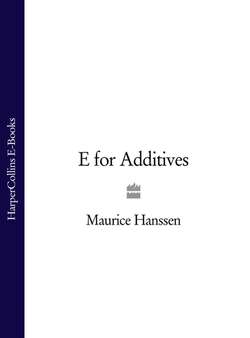Читать книгу E for Additives - Maurice Hanssen - Страница 9
1. How to Read the Label
ОглавлениеSince 1 January 1986 most foods have had to carry a relatively complete list of ingredients. Flavourings do not have to be declared, except by the word ‘flavourings’, but all the other ingredients, including water, have to be listed in descending order by weight, determined as at the time of their use in the preparation of the food. Water, when there is more than 5 per cent, and other volatile products which are added as ingredients of the food, are listed in order of their weight in the finished product, the weight being calculated in the case of water by deducting from the total weight of the finished product the total weight of the other ingredients used.
If an ingredient used in food is in a concentrated or dried form and becomes reconstituted during the preparation of the food then the weight, in determining the order of the list of ingredients, can be the weight of the ingredient before it has been concentrated or dried. If the food is itself a mixture of concentrated or dried ingredients which have to be reconstituted by adding water, then it is allowable to list the ingredients in descending order of their weight when reconstituted provided that, instead of just saying ingredients’, the list is preceded by the words ‘ingredients of the reconstituted product’, or something similar.
If a food consists of, or contains, mixed fruits, nuts, vegetables, spices, or herbs and no particular fruit, nut, vegetable, spice, or herb predominates significantly by weight, the ingredients can be listed in no particular order if the list is headed by a phrase such as ‘in variable proportion’, and if the variable proportion mix is just a part of the list of ingredients, then the producer can state that that part of the ingredients list is in variable proportion.
Therefore, with a few exceptions, ingredients are listed in descending order by weight. It is very important to take this into account when reading the label. Many soup or dessert mixes have remarkably similar lists of ingredients in which sugar, starch or flour of some sort, and hydrogenated vegetable fat are high up on the list of ingredients, and sometimes the designated variety of the product such as tomato or strawberry is present in small amounts, or maybe altogether absent.
Food has to be described in a way which is not misleading, using, where there is one, the name prescribed by law, and if there is not, then a customary name, and failing that a precise enough description to inform the purchaser of its true nature and, if needed, a description of its use A made-up name cannot be used instead of the proper name of the food.
‘Flavour’ is a word that does not mean quite what it seems to because if a product is, for example, ‘strawberry flavour’ then it need not contain any strawberry at all. If it is ‘strawberry flavoured’ then a significant part of its flavour must be from strawberries, and if it is ‘strawberry’ then it is made with whole strawberries. This is a rule of thumb which is not enshrined in law, and a number of manufacturers and Local Authorities are of the view that both words ‘flavour’ and ‘flavoured’ are themselves misleading, and a proper description of the product which does not contain any of the designated substance would be ‘artificially flavoured’. Until this is tested in the High Court, or a new regulation is made, the consumer is left with an uncertain and misleading situation.
‘No added sugar’ is another area of potential misinformation. Because many people are worried that too much sugar will cause them to put on excess weight they look out for products which are sugar-free or contain no added sugar. This description is applied even when the food contains a very large quantity of naturally occurring sugars. An example is jam made without added sugar but with concentrated apple or pear juice containing a naturally high level of sugar. Sugar is being interpreted by certain manufacturers as being just the use of sucrose (table sugar). Other sugars, such as lactose and fructose, are sometimes also included in products which are said to have no added sugar.
Certain diet products are equally misleading; for example, there is a diet bar on sale which has sugar as its second largest ingredient. There is also a tendency for manufacturers to say ‘no added colour’ or ‘no preservatives’ or ‘no artificial ingredients’, all of which may be true but does not alter the fact that the food itself is of low nutritional worth. There is no substitute for reading the ingredient list.
